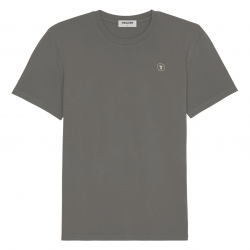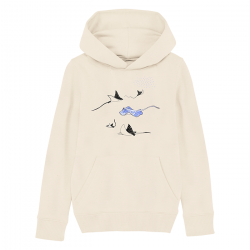Fast fashion and the global chains now dominate our high streets and online shopping.
The result?
Cheap, mass-produced clothing made of toxic materials often replicating the newest styles and trends, fueled by what’s in vogue with celebrities and designers.
The chase for new styles at the lowest possible price leads to corners being cut in quality, workplace practices and environmental sustainability.
But there’s an alternative to this damaging process: Slow Fashion.
Slow Fashion puts emphasis on quality over quantity.
It is not seasonal and doesn’t run after trends. It takes time in preparation and production.
Raw materials are locally sourced and products are usually handcrafted. This results in higher quality clothing that lasts longer, is not disposable and is sustainable.
Against Fast Fashion: The Slow Fashion process
Slow Fashion has a holistic approach because it considers the complete life cycle of the product:
- Design: Sustainable sources, ecological and ethical practice
- Production: Quality and craftsmanship
- Consumption: Longevity, sustainable investment
Against Fast Fashion: The Slow Fashion mindset
Slow Fashion is expressed as a philosophy through which a conscious consumer cares deeply about the effect of our choices and questions how we buy, wear and care for clothes.
It’s about embracing conscious shopping, something that lies at the core of our Bluehouse principles.
It’s about fair working conditions, reversing environmental damage, using long term sustainable resources, improving communities, and wearing clothes for longer.
And, above all, it’s about embracing a compassionate and caring lifestyle in every way we can.
That’s why, if you would like to embrace the Slow Fashion mindset, here are some tips:
- Avoid trends. Embrace singularity and personal style
- Shop second hand & vintage
- Buy directly from creators
- Support minimalism: Slow Fashion items may be more expensive but you don’t need as much when you know they’ll last!
- Wash less. Sometimes it is enough to air-out clothes or partially remove stains before putting them in the washing machine
- If washing, choose on cold and skip dry cleaning
- Repair. If you don’t have the time or the skills, you can also take your clothes to your local tailor who should be able to repair most defects for a reasonable price
- Choose mostly standard shipping
- Rent for special occasions
The 4 Big Problems of Fast Fashion
Environment
Firstly, the production of clothing costs a lot of water throughout the whole process.
We make most of our clothes (40%) out of cotton. Cotton is a very thirsty crop that needs a lot of water. To grow 1 kg of cotton, you need 10.000 liters of water.
In addition to that, we also use a lot of water to dye clothes. 17 to 20% of industrial water pollution is from textile dyeing and treatment.

Source: Future Fashion Forward
Secondly, there is the pollution: 60% of all clothing that is developed is produced in developing countries. All the clothing produced there is transported by boat. These cargo ships are very polluting and there is little regulation about what these ships are allowed to emit.
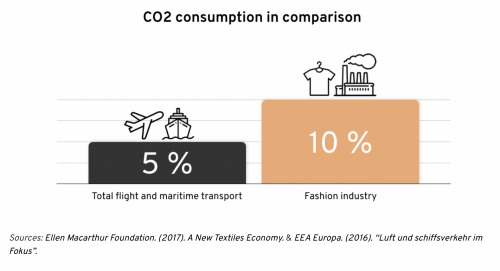
And thirdly, the chemicals and materials. Factories use toxic chemicals to dye and waterproof clothing. Quite often these chemicals escape into the environment and make their way into the water supply.
The low-cost garments of Fast Fashion require man-made fabrics like polyester and other acrylics.
These crude oil by-products shed microfibre plastics that are almost impossible to dispose of (mostly when clothes are washed in the washing machine!). Plus, they are made of crude oil, which emits significant amounts of CO2 during production.
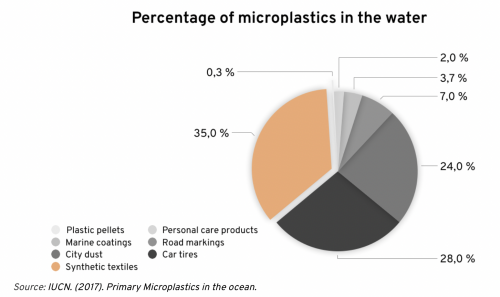
Slow Fashion, on the contrary, uses natural materials grown in a sustainable manner. And you also won’t find any toxic chemicals used in dyes and waterproofing.
Because of this, less strain is placed on the environment and landfills see less man-made waste.
People
Low wages, hazardous working conditions and lack of human rights are the costs of Fast Fashion.
Workers become overworked while meeting the insane production speed to justify low prices. Children or even slave labour is used to meet demands.
Ethics comes into play here, slow fashion is about doing the right thing at every step of the supply chain.
Without so much pressure on cheap prices, slow fashion companies provide fair wages, implement safer working practices, and ultimately better conditions.
Some brands go much further than this to help local communities they rely on in the supply chain offering amenities, housing, schools and education in deprived areas of the world.
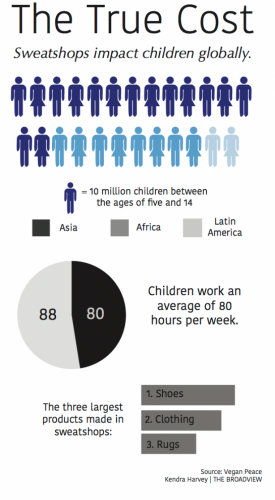
Quality
Cheap materials, corners cut on build quality, and inadequate designs all contribute to fashion garments that simply don’t last.
So what happens with these low quality items? Most of it ends up in landfills, and since 90% of it is man-made fabrics it doesn’t decompose!
Quality is imperative in reducing consumption, buying less and reusing what you already have.
That’s why slow fashion garments use high-quality materials.
They design fabrics to last longer rather than to reduce prices. For example, organic slow grown cotton has longer strands that can be woven more tightly.
With fewer restrictions on price, manufacturers can use more expensive materials which are simply out of reach to basement price retailers.
More time and care taken during the design and manufacturing processes results in better build quality.
You buy cheap, you buy twice. (If not thrice).
Why? Because poor quality just doesn’t last.
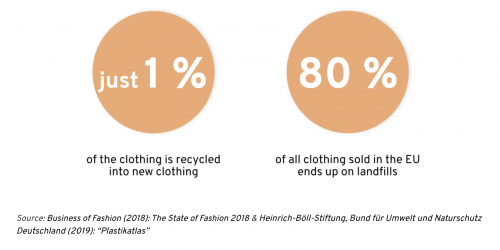
Over-consumption
The fashion industry incites us to buy more than we need.
Greenpeace found out that a staggering 40 % of our wardrobes are rarely or never worn. Due to constantly changing trends and new collections in the shops, our own clothes quickly go out of fashion and we get the impression that we need something new again.
Actually, it is not uncommon for retailers to introduce new products multiple times in a single week to stay on trend.
The offer of constantly new collections is huge: Between 2000 and 2014 the production of new clothing doubled, and in 2014 for the first time the eye-watering mark of 100 billion newly produced garments was hit.
An alternative to Fast Fashion: Conscious and sustainable brands
We rely on Blue Labels at Bluehouse World: a set of sustainability standards where each brand justifies the way in which certain sustainability criteria are met for their products.
We require every producer to explain their process in the product description.
In our Clothing category, we put special emphasis on brands that use high-quality sustainable materials and fair working conditions.
Check some of them out:
- Tiesjurt makes garments of 100% organic ring-spun combed cotton fairly-produced in Bangladesh, FAIR WEAR FOUNDATION & GOTS certificated and PETA-Approved Vegan.
- Hemper ‘s entire production process is done using traditional textile techniques and materials from Nepal. The process begins in the mountains of the of the west of that country, where hemp has been handled for centuries.
- Iron Roots produces garments of a durable mix fabric of beechwood and organic cotton, which gives the items a soft feel and unique comfort. They are breathble, microplastic-free, antibacterial and anti-static.
We’ve all heard the story of The Tortoise and the Hare…
The slow pace is sustainable in the long run, while the mad sprint is eventually too much.
In order to make fashion fairer again and mitigate climate change, more and more people should consider buying from Slow Fashion brands.
In this mad race of mindless production and overconsumption, it’s time for the Tortoise to make its comeback.
And win the competition.
Sources: Better World Apparel, Project CECE, SANVT, Hawthorn, Greenpeace


